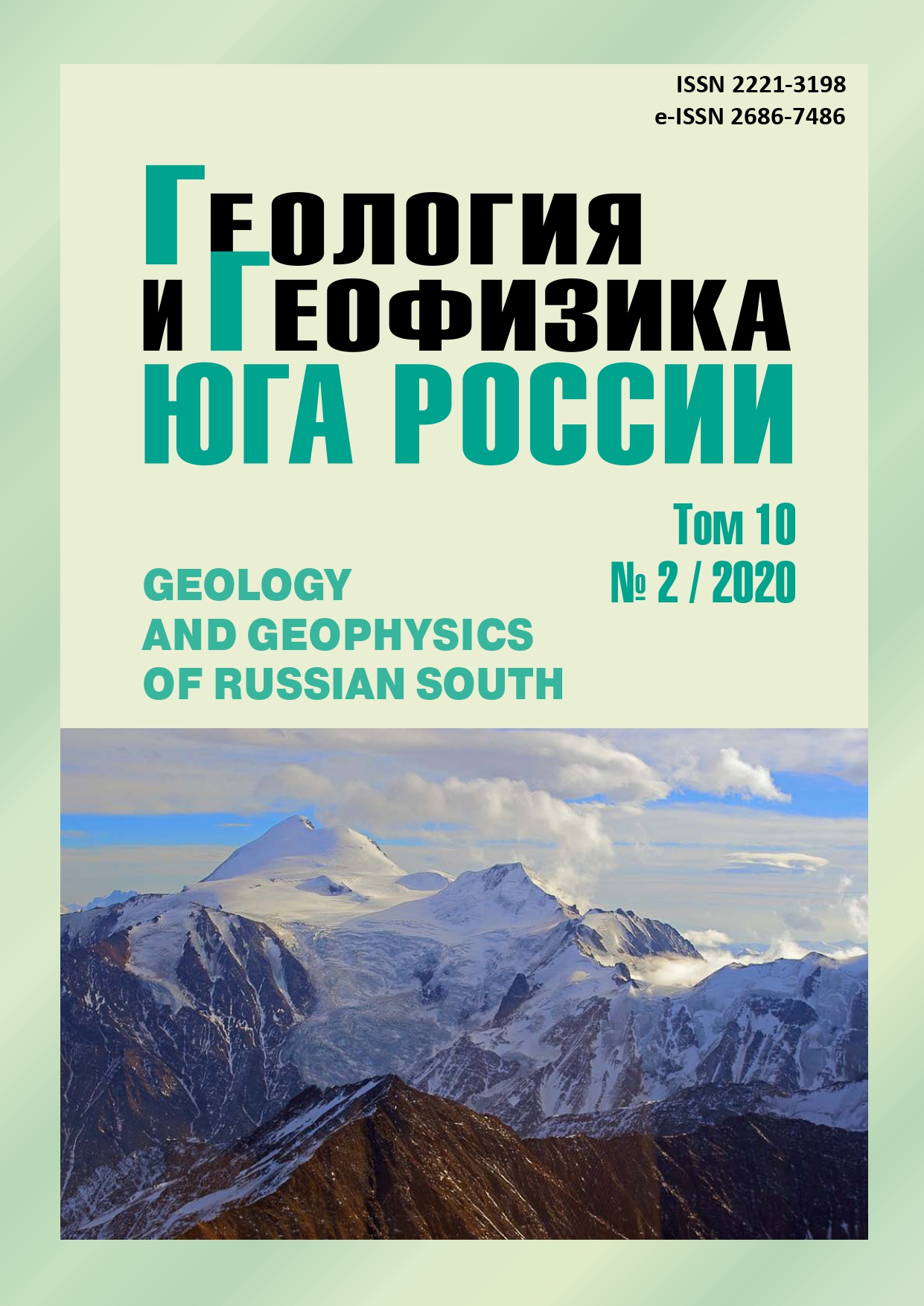Folding Structure of the South Slope of the Great Caucasus in Crossing the Gorge of the River Ksani
Abstract
Relevance. The article considers the folded structure of the Greater Caucasus at the intersection of the gorge of the river Ksani, who is still not well understood. At the same time, the study of the folding of the Greater Caucasus has crucial significance for the determination of the conditions of formation of the modern folded structure of the region. Aim. The establishment of important features of the Greater Caucasus folding essential for identification of the reason and mechanisms of its structure formation, which are not yet fully resolved problem. The research methodology was a very detailed sketching of the folding of the region along the river Ksani gorge in a scale of 1:1000, which allowed to record all the features of the studied structure. The section compiled during field studies was reduced to 1:50000 scale. The resulting geological and structural profile sufficiently fully and accurately reflects the main features of the structural construction of the region. Results. In the studied section, a number of new important features of the folded structure of its MesozoicCenozoic strata are established. First of all is revealed, it should be noted that the fold structures are multi-order and of different ages and of sublatitudinal strike. The first-order structures are earlier folds and are represented by asymmetric southwardly declined highly compressed 1-3 km wide folds. Complicating later large structures folds of higher orders are also tightly compressed, asymmetric with the axes dipping to the north. Their sizes vary widely – from 0.5 m to several tens of meters. The sublatitudinal strike of the folding indicates that it formed in a different deformation environment than the main northwestern structure of the Greater Caucasus. Discussion of the results and conclusions. Established character of folding indicates a different genesis of the structures during the two-stage diverse deformation of the region. It was found that at the first suprahorogenic stage of dislocation (Jurassic-Middle Miocene), the Caucasus experienced northeast tangential contraction caused by the pulling and pressing of the Black Sea-Transcaucasian microcontinent to the Greater Caucasus. As a result, the main linear folded structure of the northwestern strike, large regional faults, and layered cleavage were formed in the region. At the second latehorogenic stage of deformation (Late Miocene-Anthropogene), the folded structure of the Greater Caucasus experienced oblique submeridional horizontal compression. It is established that the cause of the deformation was the longitudinal movement of the Ksani schol, a block of the microcontinent and its emplacement into the folded structure of the Greater Caucasus. These dislocations in the region contribute generation of the late low folding superimposed on the early structure, small shear faults, and crosscuting cleavage of the sub-latitudinal direction. It is concluded that, under indicated conditions, by different dislocation mechanisms was formed the modern complex folded structure of the southern slope of the Greater Caucasus at the intersection of the river Ksani gorge during the alpine cycle of regional tectogenesis.


